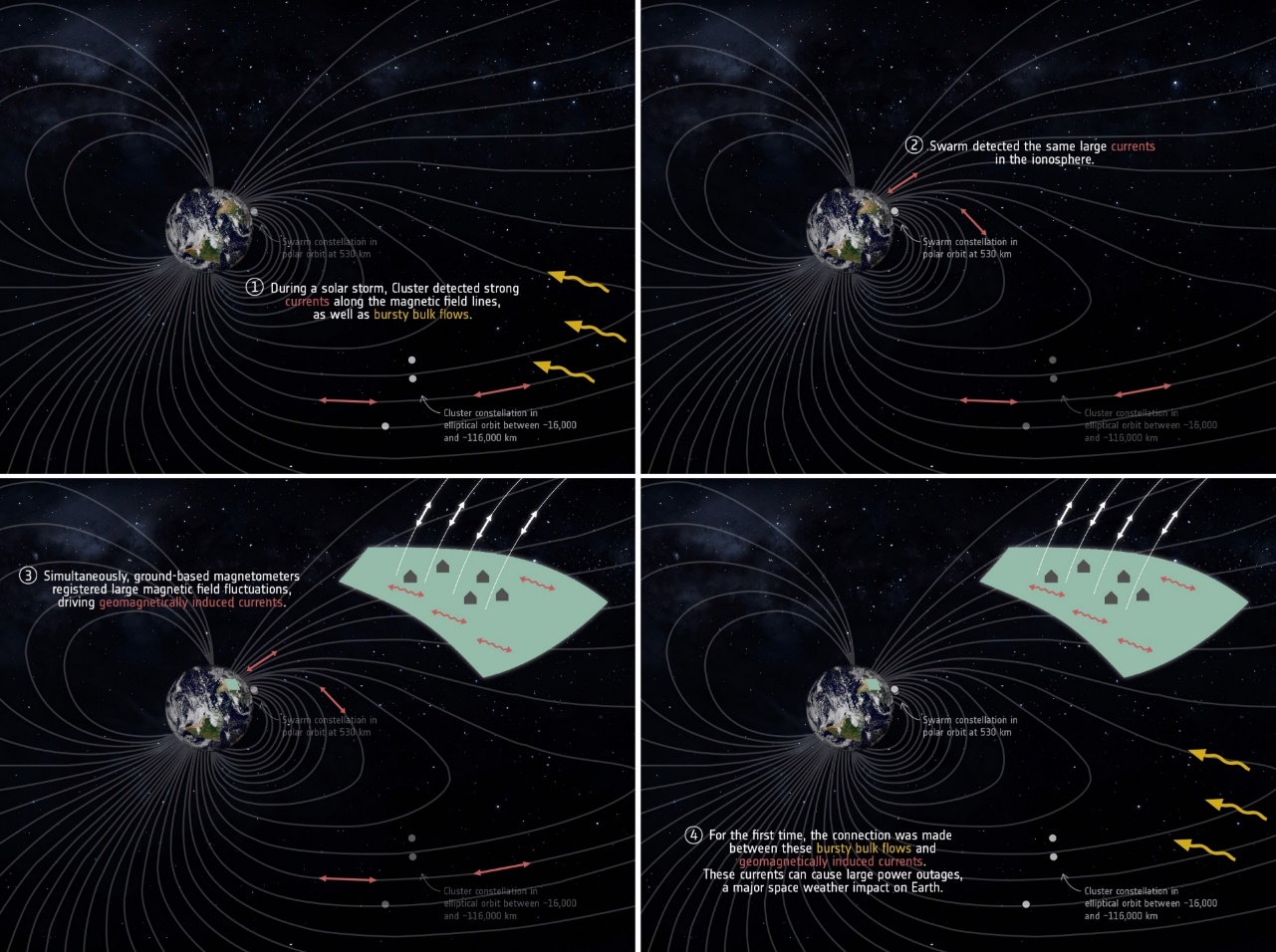Using the detection data from ESA’s Cluster and Swarm missions, Professor Malcolm Dunlop and his research group from the School of Space and Environment of Beihang University have, for the first time, found the direct observation evidence of violent magnetospheric disturbance driven by explosive high-speed particle flows above the earth. The research results have been published in the well-known international space physics journal Geophysical Research Letters.

The European Space Agency (ESA) website reported this discovery under the title “Swarm and Cluster get to the bottom of geomagnetic storms”, and the research result was also recognized as a highlight by ESA. Doctoral student Wei Dong is the first author of the paper, and Professor Malcolm Dunlop is the second author and corresponding author.
Based on the multi-point observation data of the magnetosphere, ionosphere, and ground system, Professor Malcolm Dunlop’s group investigated the explosive global currents in the inner magnetosphere, the field currents in the ionospheric conjugate region, and the magnetic disturbance in conjugate regions of the ground during the January 7, 2015 storm. This research found that the Cluster satellite observed significant explosive high-speed currents in the magnetospheric space during the severe disturbance of the ground magnetic field. Moreover, the morphology and structure of the field-aligned currents in the magnetosphere and ionosphere at different heights were strikingly similar, which directly proved the link between the explosive high-speed currents of the magnetosphere and the severe disturbance of the ground magnetic field, and revealed the driving effect of the explosive high-speed currents on the ground severe magnetic disturbance through the field-aligned currents. The physical process is shown in the figure below.

The ESA report has shown that although this scientific discovery may seem too academic, it has practical significance for the entire society. With the rapid growth of ground and space infrastructure that guarantees human life, the need to understand and monitor the space weather environment is also urgent. These new results will be helpful in further understanding the process that may lead to potentially hazardous problems in space weather environment in the Earth’s magnetosphere.
This research was supported by the National Natural Science Foundation of China, the China Meridian Project, etc.
Link to the article:
https://doi.org/10.1029/2020GL091781
Link to the report by ESA:
https://www.esa.int/Applications/Observing_the_Earth/Swarm/Swarm_and_Cluster_get_to_the_bottom_of_geomagnetic_stor
Reported by Yu Yiqun
Reviewed by Tang Li
Edited by Jia Aiping
Translated by Zang Mingming

